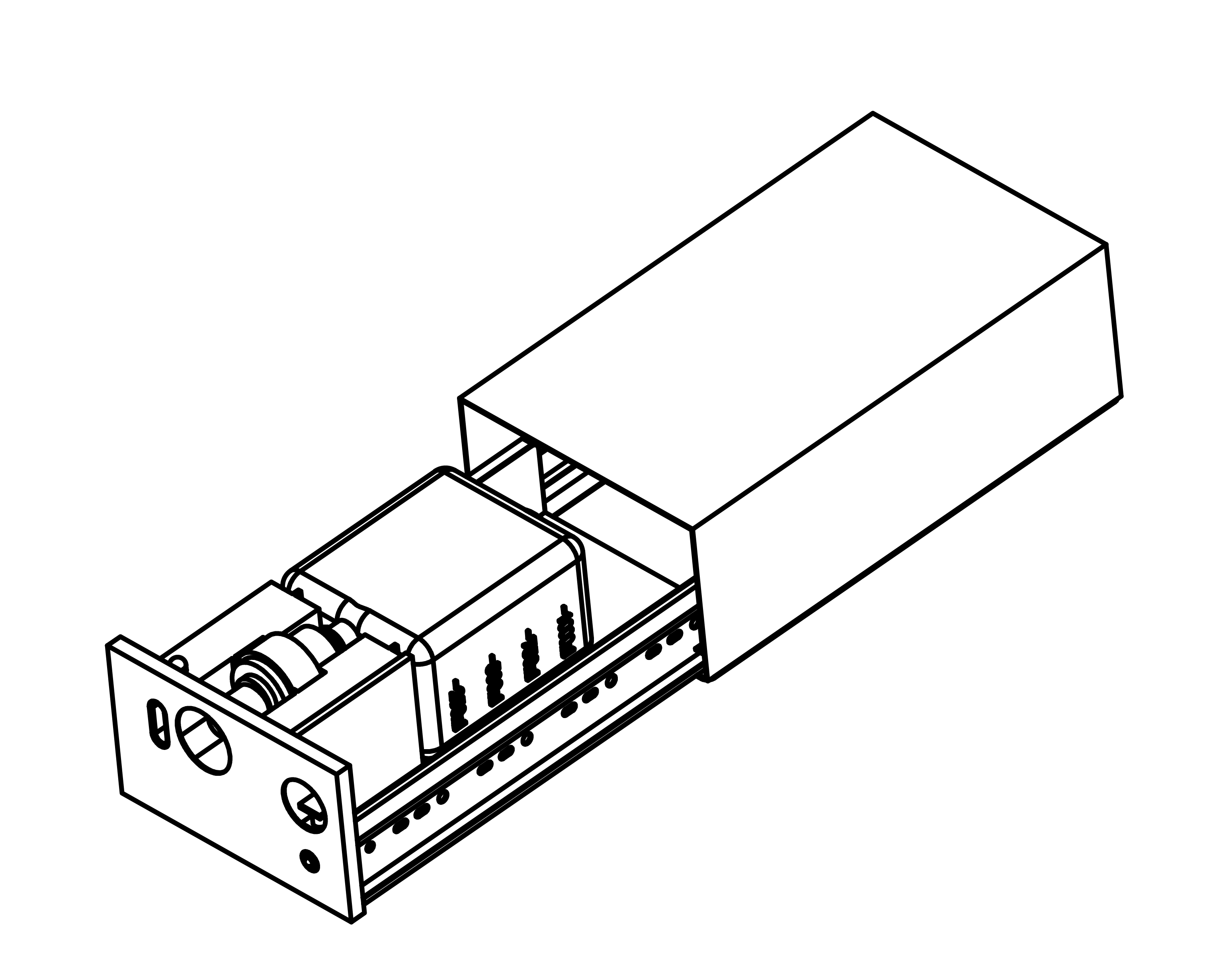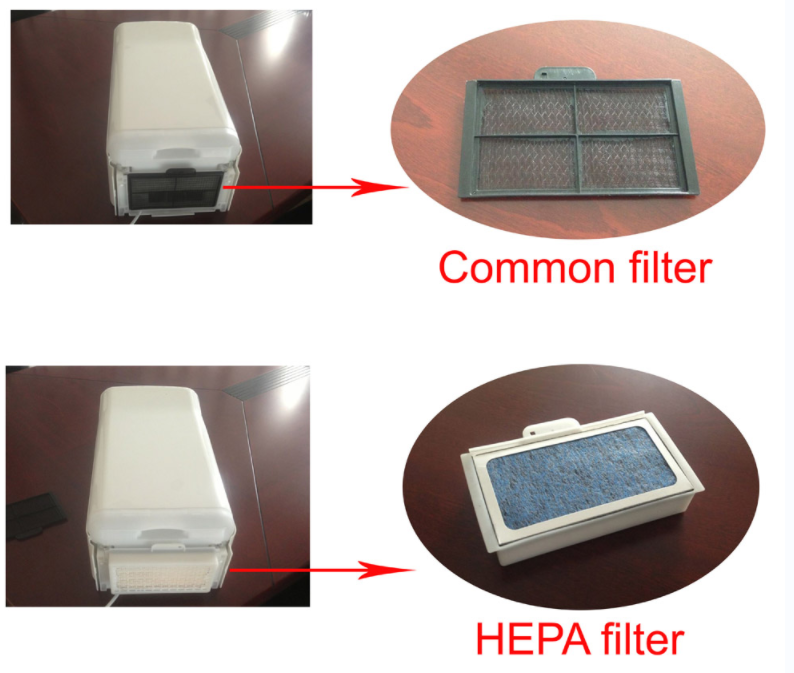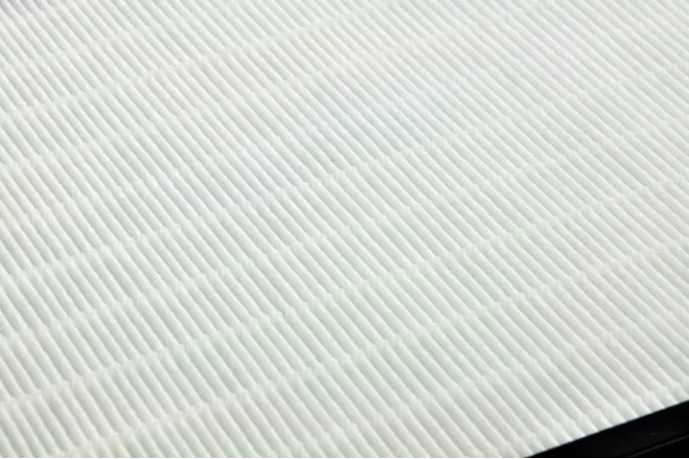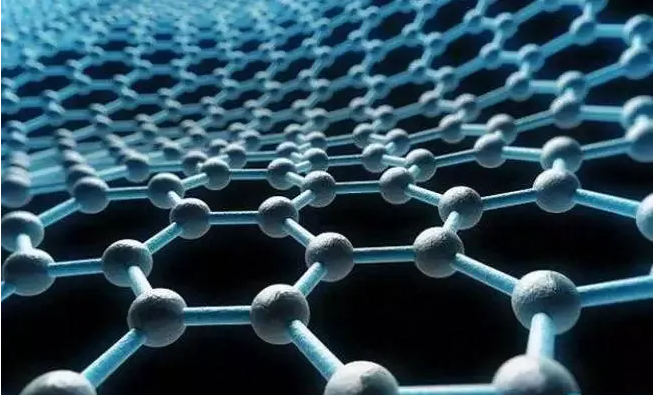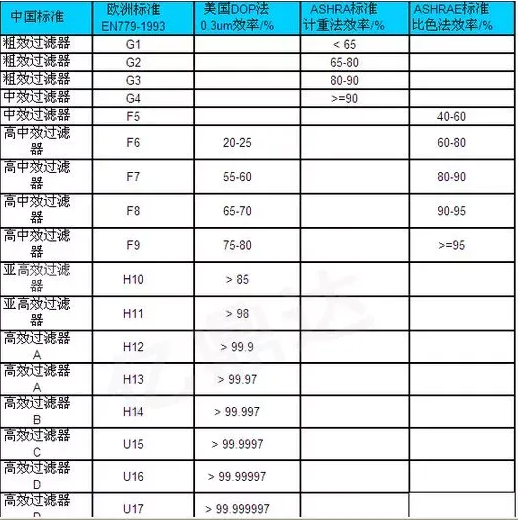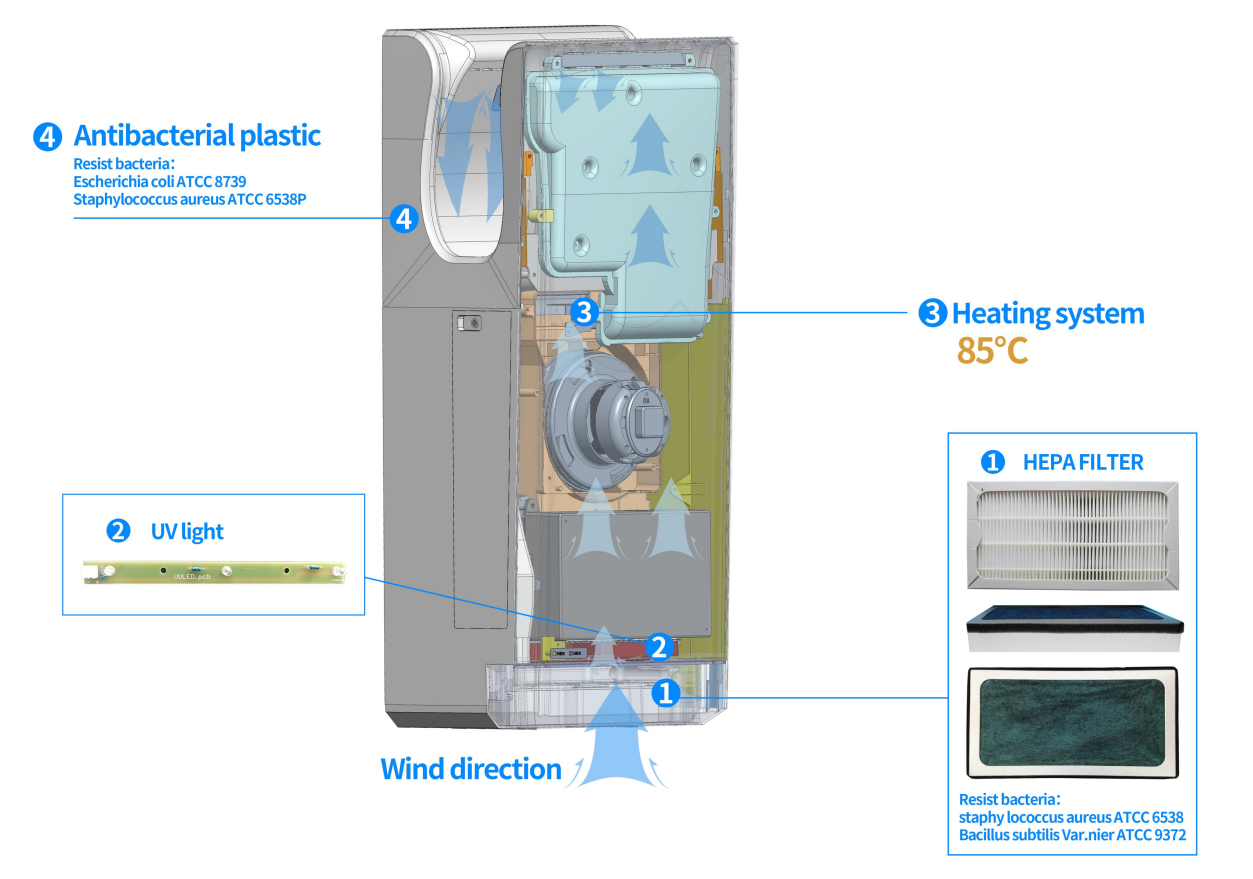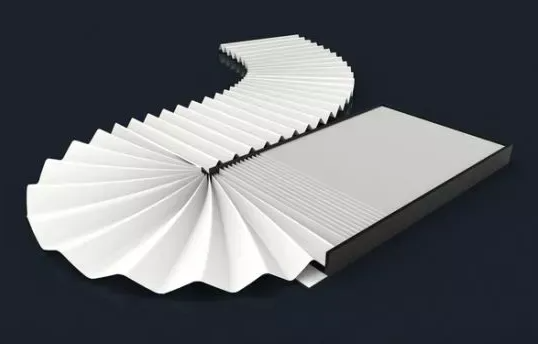When buying a FEEGOO hand dryer , you will always hear the word “HEPA filter” mentioned by merchants, but many people still don’t know much about the HEPA filter, and their understanding of it remains at the superficial level of “advanced filter”. level.
What is Hand dryer HEPA filter?
HEPA filter is also called HEPA high-efficiency particulate filter, the full English name is High-efficiency particulate arrestance.
HEPA filters are generally made of polypropylene or other composite materials, and most of them are not washable. A small number of HEPA filters made of PET can be washed with water, but the filtering effect of such filters is low.
Most of the HEPA filters used in the fresh air system are as shown below. In order to increase their dust holding capacity, dozens of folds are folded, and the texture feels a bit like thick paper.
How does Jet Hand dryer HEPA filter work?
HEPA filters filter through 4 forms: interception, gravity, airflow and van der Waals forces
1 The interception mechanism is the sieve commonly understood by everyone. Generally, large particles of 5 μm and 10 μm are intercepted and “sieved”.
2. Under the influence of gravity, the dust particles with small volume and high density will reduce their speed when passing through HEPA, and will naturally settle on the HEPA filter like sediment sinking to the bottom of a river.
3 The filter screen is unevenly woven to form a large number of air vortices, and the small particles are adsorbed on the HEPA filter screen under the action of the airflow cyclone.
4 The ultrafine particles do Brownian motion to hit the HEPA fiber layer, and are purified by the influence of van der Waals force. For example, virus carriers below 0.3 μm are purified under the influence of this force.
Van der Waals force: the intermolecular force, which refers to the force that exists between molecules (molecule) and molecules or between noble gases (noble gas) and atoms (atoms).
HEPA filter rating
I always hear someone say “the filter I use is H12″, so what is the “H12″ evaluation standard here?
According to the EU EN1882 standard, according to the filtration efficiency, we divide the HEPAl filter into 5 grades: coarse filter, medium efficiency filter, sub-high-efficiency filter, HEPA high-efficiency filter and ultra-high-efficiency filter.
A filter with a filtration efficiency higher than 99.9% for particles with a particle size of 0.3 μm is called H12.
Common Misunderstandings of Hand dryer HEPA Filters
Myth 1: The larger the volume of particulate matter, the easier it is to be removed by HEPA?
Analysis: The purification principle of the HEPA filter is not simply to filter out particles larger than the mesh like a sieve to purify the air. Instead, it relies on the van der Waals force between the fine particles and the filter to form the adsorption effect, and it has a good filtration efficiency for particles above 0.5 μm and below 0.1 μm.
Particles below 0.1 μm perform Brownian motion. The smaller the particle is, the stronger the Brownian motion is, and the more times it is hit, the better the adsorption effect.
And the particles above 0.5μm do inertial motion, the greater the mass, the greater the inertia, and the better the filtering effect.
In contrast, particles with a diameter of 0.1-0.3 μm have become difficult to remove HEPA. This is why the industry defines the HEPA filter grade with a filtration rate of 0.3μm particles.
Misunderstanding 2: The purification efficiency of HEPA for 0.3μm microparticles can reach more than 99.97%, so its purification effect on 0.1μm microparticles is not certain, right?
Analysis: In the same way as the misunderstanding, PM0.3 is easier to break through the protection of HEPA filter, because it is less susceptible to the influence of van der Waals force. Therefore, a filter with a 99.97% effect on PM0.3 may be more effective on PM0.1. Well, even 99.99%.
Myth 3: The higher the HEPA filtration efficiency, the better?
Analysis: Anything is too much. The higher the HEPA filtration efficiency, the greater the resistance, and the actual ventilation volume will be reduced. When the air volume decreases, the number of purifications per unit time will also decrease, and the purification efficiency will decrease.
Therefore, only the most reasonable combination of fan, filter and airflow circulation design can achieve an excellent model.
How often should the Hand dryer HEPA filter be replaced?
Finally, back to a question that everyone is concerned about, how often does the HEPA filter need to be replaced?
The core indicator for judging the service life of the filter is the dust holding capacity. The core data that affects the dust holding capacity is the extension area of the filter screen. The larger the extension area of the filter screen, the higher the dust holding capacity and the more durable the filter screen.
Dust holding capacity refers to the amount of dust accumulation when the resistance due to dust accumulation reaches a specified value (generally 2 times the initial resistance) under the action of a certain air volume.
But for ordinary users, the basis for judging the replacement of the filter is to observe with the naked eye.
It is unscientific to judge whether the filter should be replaced by the method of naked eye observation. It may overuse the filter, causing secondary pollution, and it may also “retire” the filter in advance without maximizing its use value.
FEEGOO uses the Gaussian fuzzy algorithm to calculate the cumulative dust removal of the filter, and recommends that customers replace the high-efficiency filter of the hand dryer once every six months.
Post time: Oct-26-2022









